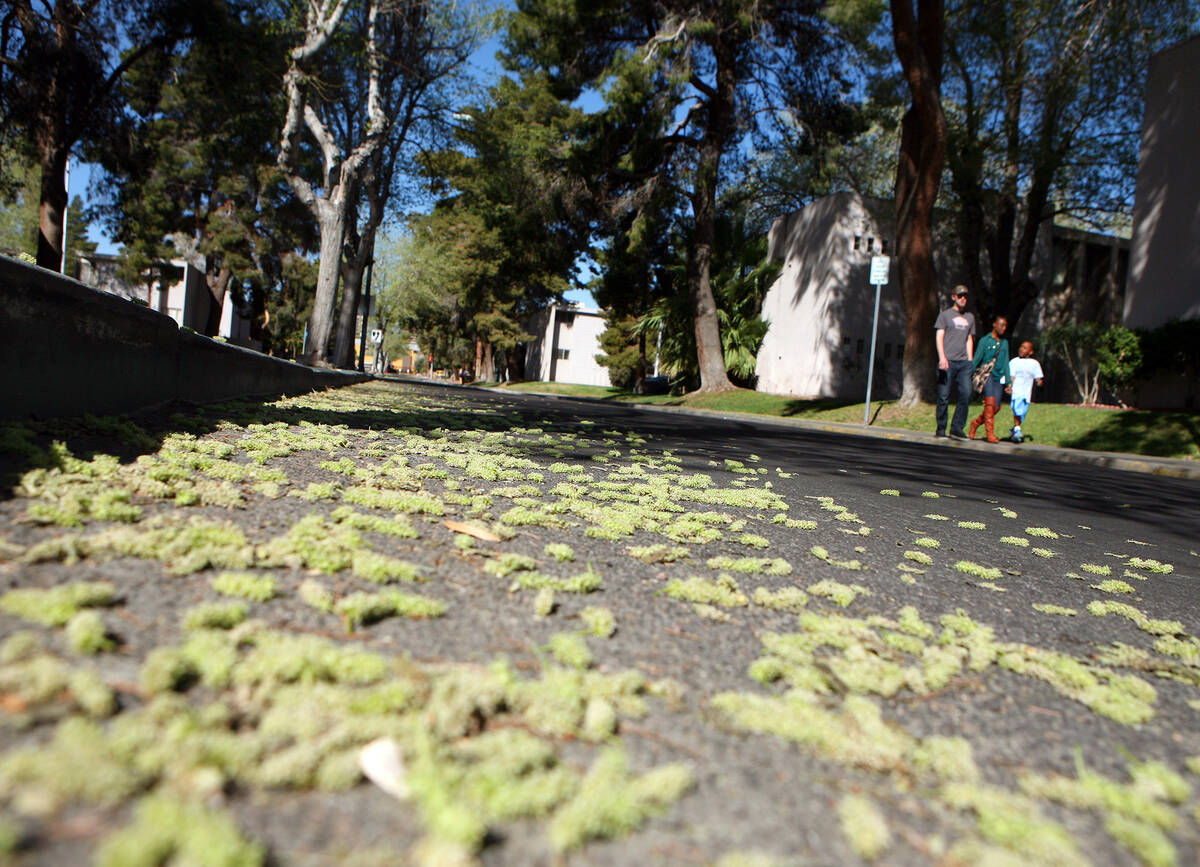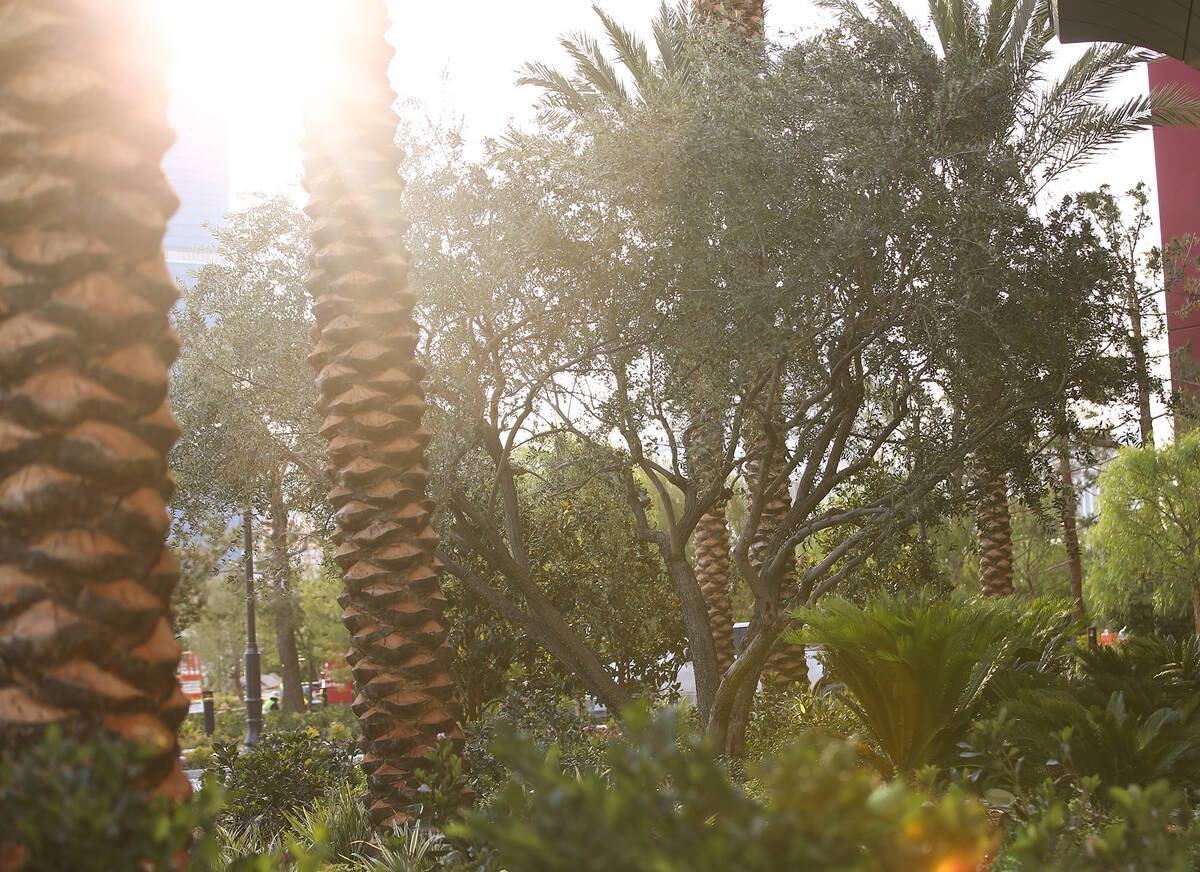Spring blooms in Las Vegas trigger allergies
Pleasant springtime weather unfortunately also brings its share of sniffles and sneezing for seasonal allergy sufferers. In the Las Vegas Valley, specific types of trees, plants, and grasses are often blamed for allergy symptoms. Here, we tapped a few experts to share which ones pose the biggest threat.
Trees: The big three
There are three trees that are considered the biggest allergen problem-makers: the European olive, mulberry, and ash. Asma Tahir, the supervisor for the Clark County School District and UNLV pollen monitoring program, monitors pollen levels for these specific trees. Her team collects samples from five sites around the valley each day: Palo Verde High School, Joseph M. Neal Elementary School, Sunrise Acres Elementary School, and Jerome D. Mack Middle School, as well as the UNLV campus. The levels are recorded for the public at unlv.edu/publichealth/pollen.
Tahir says the mulberry tree can be extremely potent when its pollen levels climb.
“It comes without warning,” she said. “During the springtime, in the past few years, it came with a bang. … You can go from a day when it doesn’t show much at all to completely engulfing a (sample) slide.”
In 1991, the county banned European olive trees, although they still can be found in older areas of town. High levels for these trees last for around 10 days. The ash, which starts blooming in January, can be seen as a hidden culprit that many people overlook. Typically, it starts blooming in January, mulberry in mid-March, and olive shortly after that, Tahir explained, although each year can vary depending on rainfall and weather shifts.
Dr. Joram Seggev, a retired local allergist and medical consultant to the CCSD/UNLV pollen monitoring program, said European olive, Arizona ash and privet, a flowering plant in the olive family, cross-react, which means that if a person is allergic to one, he or she is allergic to all three.
Cottonwood, while mentioned less often in the allergy conversation, is another one that Seggev found posed problems for patients when he was in practice. Cottonwoods often produce their pollen in late spring, typically between March and May.
Male and female trees
Ken Busse, district manager for the Las Vegas office of Davey, a tree maintenance company, says it’s also important to understand that there are male and female tree varieties; males are the pollen producers, and in many cases, a female tree may not pose many allergy issues at all.
“With mulberry trees, the male produces the irritating pollen, the female produces the fruit,” he explained. “The fruit, on the other hand, can be more of a nuisance for some because it falls from the tree.”
Dan Secinaro, a horticulture specialist for the Springs Preserve, says pine, mesquite and olive trees, which have both male and female varieties of one tree, can be difficult for anyone who has a known allergy to them because they can’t choose the pollen-free female variety exclusively.
Ash, on the other hand, comes in male and female varieties, so a homeowner can seek out a female tree if they’d like, he said.
Ragweed, plants, and grasses
Ragweed is another common allergen in the Las Vegas Valley. What is unique about it, Seggev noted, is that it produces pollens in the spring and the fall as well. The local species is similar to ragweed found in the Midwest and on the East Coast.
“It’s not the same ragweed as you find in the Midwest and East, but it is cross-reacting with the Midwestern ragweed,” Seggev said.
Seggev also found that non-native grasses like rye and Bermuda pose problems for some patients. For grasses, it’s a case of finding out if you are allergic to a specific one. Many will cross-react, but not all do, he added.
Sometimes, grasses can pose a problem because a homeowner may not know they are allergic to one. If they have pets, an animal may roll in grass outside. Then, when the homeowner has symptoms they think they are allergic to the dog or cat, only to learn after an allergy test that it’s the grass the animal plays in and brings indoors that’s the problem, Seggev also said.
Wind pollinators, tips to avoid problems
Secinaro says it’s important to understand which trees are wind pollinators, such as pine and mesquite.
“These trees pump a ton of pollen into the air in the hopes that some of the pollen will make its way to another tree nearby to pollinate it,” he said. “If I had allergy issues and if I was going to buy a plant and I wasn’t sure about it, I would look it up to see if it’s wind pollinated or not, and if it is I wouldn’t buy it. You can do a simple google search for that.”
Wind can also pose problems for allergy sufferers who may not be allergic to the most common problem trees or grasses, Secinaro added.
“If you’re in your yard … shrubs are going to have pollen on them that has landed there all spring long from everywhere else in town,” he said. “A lot of times people will go outside to trim shrubs and start sneezing; it’s not because of the shrub. It’s the pollen that landed on it from somewhere else.”
If you’re considering planting a tree or shrub, Tahir warns that some drought-resistant landscaping may still come from the ragweed family. She recommends doing your research before buying any plant or tree to understand what family it comes from. If you are highly sensitive to a certain category of plant, grass or tree, you may want to stay away from all varieties in that family.
People can be allergic to pollens from any tree, plant or grass, Seggev added, and you really don’t know until you are tested by a physician.
Seggev says a few things you can do around the house to minimize allergy symptoms include: reducing the amount of carpet in the home, if possible; using a nonionic air purifier in rooms; not sleeping with pets in the bed; and keeping windows and doors closed during the high pollen season.



















